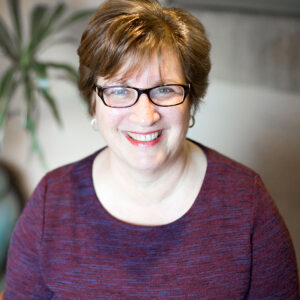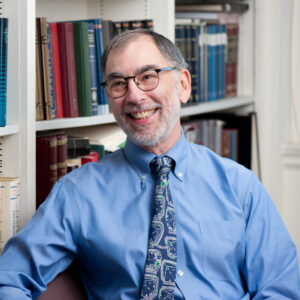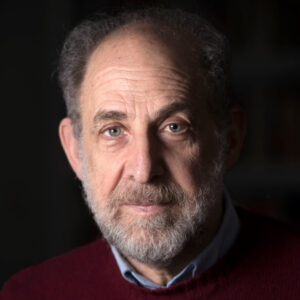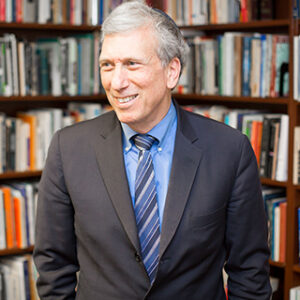
The Jewelry of a Master Teacher
Feb 23, 2024 By Lilly Kaufman | Commentary | Tetzavveh | Purim
Without using alchemy, the 16th-century Italian commentator Seforno (1470–1550) turned gems into gold. Writing a few short words about the gemstones that adorned the clothing of the High Priest, described in Parashat Tetzavveh, Seforno shares a truly fine insight about achieving greatness as an educator.
Read More
The Meaning of Aaron’s Holy Garments
Mar 3, 2023 By Robert Harris | Shabbat Zakhor | Tetzavveh
In this commentary, I would like to focus on some of the vestments of Aaron that he wore in his capacity as kohen gadol (High Priest). At the beginning of Exodus 28, the Torah commands that the Israelites who are skilled artisans should prepare a specific list of items for Aaron and the priests to wear. These include the breastpiece, ephod, robe, fringed tunic, headdress, and sash.
Read More
Garments of Light
Feb 11, 2022 By Raymond Scheindlin | Commentary | Tetzavveh
Last week, we read God’s orders to Moses for the construction of the Tabernacle and its accoutrements. This week, our parashah continues on the subject of the Tabernacle and the preparations for starting the sacrificial cult, focusing on the Tabernacle’s personnel: the priests—particularly their vestments and the rituals for the priests’ consecration.
Read More
The Masks that We Wear
Feb 26, 2021 By Ofra Arieli Backenroth | Commentary | Tetzavveh | Purim
Growing up in Israel, Purim was a wonderful experience, full of fun and games. Dressing up, putting on masks, going to parties, and attending the Purim Parade in Tel Aviv—the Adloyada. This name is derived from a rabbinic saying in the Talmud that one should revel on Purim by drinking “until one no longer knows [how to distinguish between ‘cursed is Haman’ and ‘blessed is Mordecai’]” (BT Megillah 7b). Attending the parade was great fun, but also had a mysterious aspect. Who are the people hiding behind the masks? What are they concealing and what are they trying to reveal? It was all very colorful and happy but, in equal measure, scary and confusing.
Read More
The Sound of the Bells
Mar 6, 2020 By Matthew Berkowitz | Commentary | Tetzavveh
At the core of Parashat Tetzavveh is a detailed description of the clothing worn by the officiants who will perform ritual service in the sacred space known as the Tent of Meeting (and later, the Temple). In the same way that holy space must be constructed differently from common space, so too must the priests and High Priest be “separate” from the common people. It is for this reason that Torah commands the fabrication of special clothing. Think of it as a holy uniform for holy ritual.
Read More
Holy Work for God’s Creation
Feb 15, 2019 By Arnold M. Eisen | Commentary | Tetzavveh
The most important headline of the week (and perhaps the year) did not appear in the top right column of the New York Times last Thursday. That spot—traditionally reserved for the lead story—was given over to the troubles facing the governor of Virginia, a scandal likely to be resolved and forgotten in a matter of weeks. Not so the fact that “the five warmest years in recorded history have been the last five, and that 18 of the 19 warmest years have occurred since 2001.” This story is likely to shape human history—and the life of the planet—for many years to come; it now seems indisputable that “the quickly rising temperatures . . . correspond with the scientific consensus that climate change is caused by human activity.”
Read More
The Jewelry of a Master Teacher
Feb 23, 2018 By Lilly Kaufman | Commentary | Tetzavveh
Without using alchemy, the 16th-century Italian commentator Seforno (1470–1550) turned gems into gold. Writing a few short words about the gemstones that adorned the clothing of the High Priest, described in Parashat Tetzavveh, Seforno shares a truly fine insight about achieving greatness as an educator.
Read More
The Poet as High Priest
Mar 10, 2017 By Alisa Braun | Commentary | Tetzavveh
Robert Browning, the Victorian poet, puzzled many of his readers when he called one of his collections Bells and Pomegranates. The issue wasn’t that he invoked a biblical type; many poets preceding him had seen themselves in prophetic terms. They were heroic figures whose imaginative powers could transform the world; they spoke truths to inspire others and change society. But what did the design on the hem of the priestly garment (Exod. 28:33-35) have to do with poetry? The poet as High Priest, a figure associated with rules and ritual rather than creativity and imagination, seemed counterintuitive.
Read More


